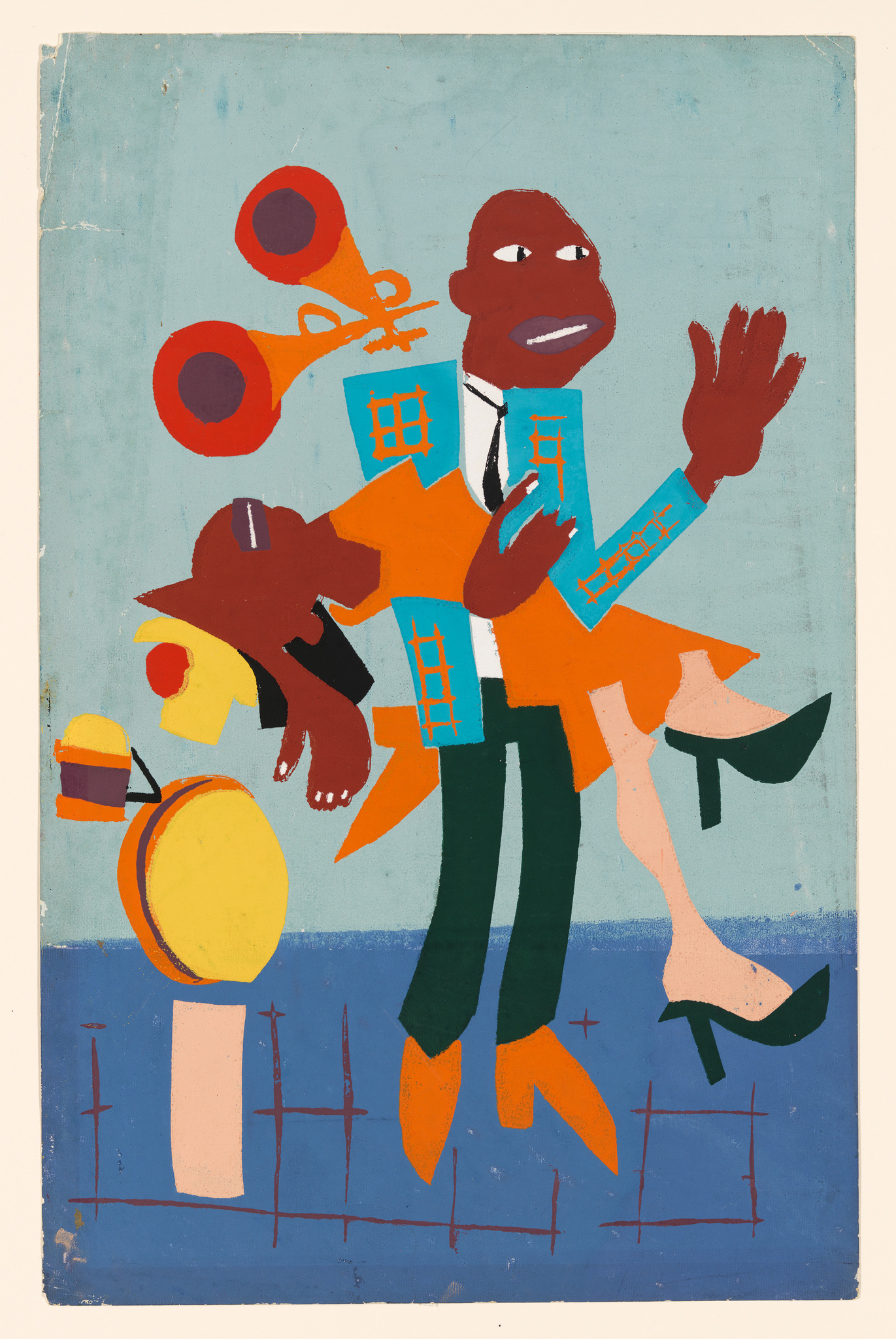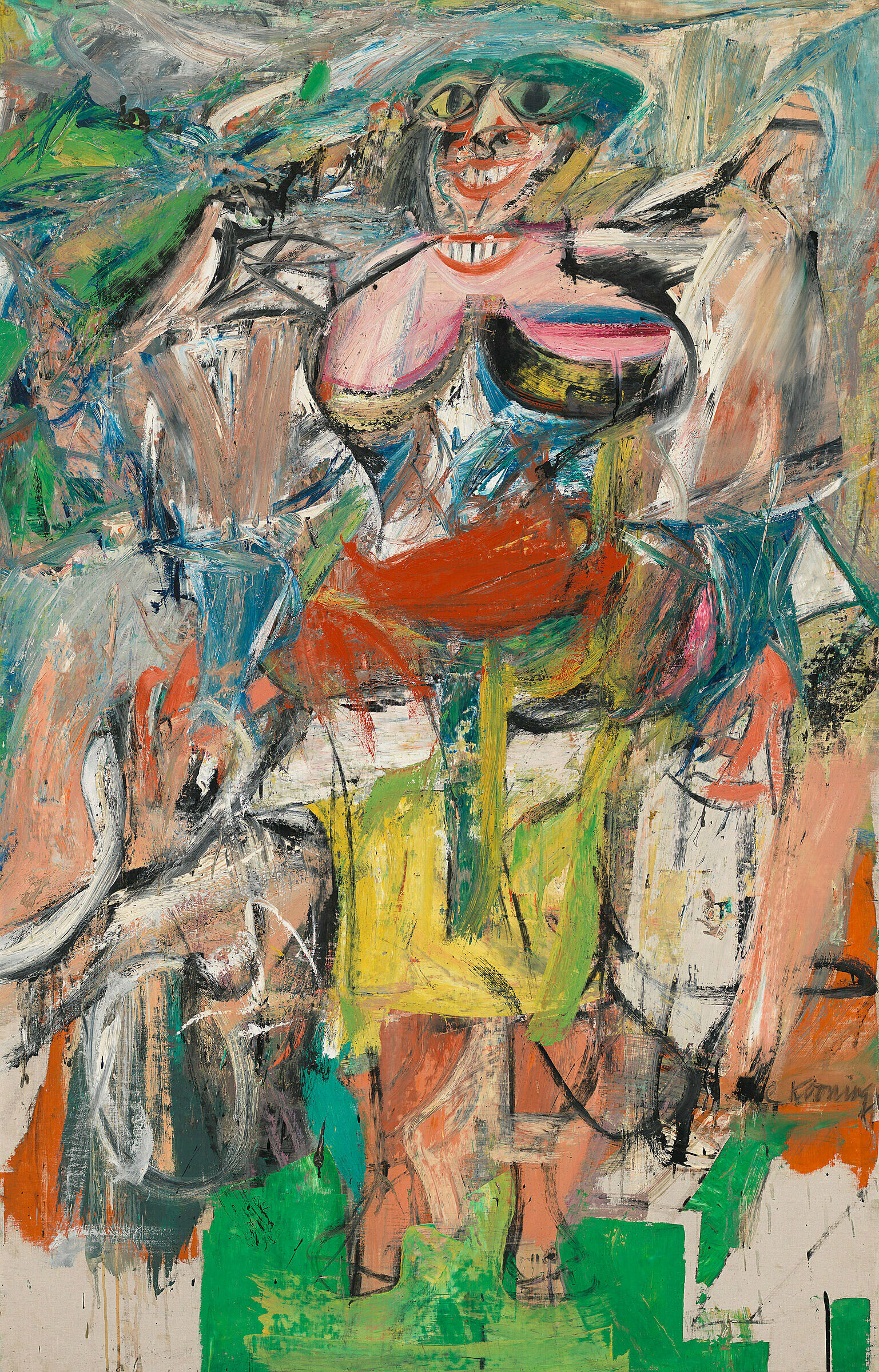In 1941, William H. Johnson began his Jitterbugs series—the title refers to a wide variety of dances including the Charleston, the Shag, and the Big Apple, set to the syncopated rhythms of Southern jazz. In the initial paintings, Johnson pictured the dancers at isolated climactic moments: making subtle gestures, showing off their fashionable clothes. But as the series evolved, he increasingly sought to capture the lively movements of the dance, as in Jitterbugs VI, which features a man dipping a woman, who bends deeply backwards and lifts her feet into the air. Johnson composes their bodies with radically simplified planes of color, so that they intersect like pieces of a jigsaw puzzle. As the Jitterbugs series progressed further, Johnson dissolved his images into a kind of Cubist abstraction. Although he drew inspiration from vernacular styles—including quilt-patterns, street signs, and folk art—his work also maintained a strong relationship to the modernist abstraction he encountered during long periods spent in Europe.
Not on view
Date
1941–1942
Classification
Prints
Medium
Screenprint
Dimensions
Sheet (Irregular): 17 7/16 × 11 1/4in. (44.3 × 28.6 cm)
Accession number
95.54
Credit line
Whitney Museum of American Art, New York; purchase, with funds from the Print Committee
Rights and reproductions
© artist or artist's estate



